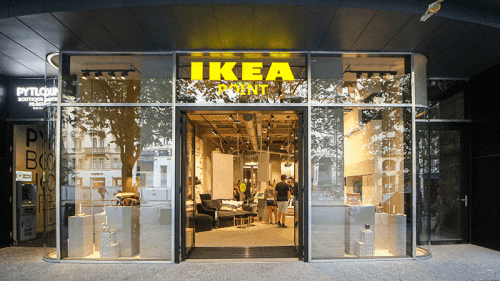The conference, which focused on investing, accessing, lending, and sourcing capital, was divided into a number of panel discussions and two keynote addresses, as follows:
- Real Estate Capital Markets Trends 2011;
- Sourcing Private Equity Capital;
- Accessing Private Debt Capital Today;
- CMBS and Conduit Lending;
- Sourcing Debt, Equity, Mezzanine, Bridge, Gap, and Rescue Financing;
- Refinancing, Restructuring, and Recapitalizing Real Estate Deals;
- Investment and Finance Strategies for Acquisitions and Development; and
- Financing Strategies for Smaller and Noncore Property.
Here’s a summary of what I learned:
- The current period is incredibly complex, since we now need to think globally as capital users and capital suppliers compete on a global basis.
- Increased volatility in U.S. asset markets is attracting global investor attention while parts of Asia (Singapore and Hong Kong) are in “bubble territory” and Europe remains “dour.”
- The Moody’s/REAL commercial property price index reached a new low (peak-to-trough) very recently.
- Transaction volume sequentially, on a trailing 12-month basis, and on a year-over-year basis is improving as average prices in the six primary markets (New York, Washington, D.C., etc.) are increasing.
- Investors, starved for yield, are pushing capitalization rates down to 2007-like territory.
- “As good as it gets”: while risk premiums have declined, positive leverage at historical lows is available, making “everything worthwhile [and worth more].”
- There is a wide array of domestic and foreign buyers active in the markets, with emphasis on the Tier I markets.
- An increasing array of lenders, including foreign banks, is providing mortgage financing.
- Of the estimated $300 billion of distressed properties in the current cycle, $120 billion has been resolved; unfortunately, we continue to add to the supply, albeit at an increasingly slower monthly rate.
- Systemic worries: recently restructured and/or extended deals may come back to haunt us and a “wall of [conventional and securitized] refinancing” remains to be dealt with.
- Constant theme: refinancing . . . staggering numbers (and obviously real estate’s “black hole”).
- More and more capital is moving into the core property space.
- Private nontraded real estate investment trusts (REITs) are funded by individual, no institutional, investors; fees coming down, structures improving; sector becoming more legitimate.
- Are banks selling distressed product? Yes, to an increasing degree. That said, the deals are complex and require cash investment, not just a “plea” that the lender extend and pretend.
- General agreement that we (that is, investors) need the government to interpose an “elegant” Resolution Trust Corporation–like entity to break the logjam and “speed our way” through the problem.
- Now that the low-hanging fruit has been picked, investors are looking at secondary and tertiary markets.
- Debt in increasing size is becoming available; seven- to ten-year maturities are common, with even some interest-only lenders in the market.
- Mezzanine capital, looking for 15 percent to 20 percent returns, is becoming generally more available for market-specific and asset type–specific recapitalization trades.
- While the crisis was preceded by relaxed underwriting standards, we were not subject to overbuilding this time; it was just a case of economic “under-demand.”
- What are realistic opportunistic rates of return? “15 percent has become the new 20 percent.”
- What sector are you avoiding? Anything related to development; it’s just too early.
- Lending: from “dismal to constructive,” recovering; spreads narrowing; market becoming increasingly competitive.
- Lending institutions are facing increasing amounts of regulation to contend with.
- “Amend and pretend: no one’s pretending; these are our clients!”
- That said, many borrowers come in to see their banker with proposals that do not meet lender “sensibilities.”
- Insurance companies like real estate’s risk-adjusted rates of return as compared with other asset-backed markets.
- But with $40 billion to $50 billion to lend each year, they are a more modest player and cannot solve the refinancing problem themselves.
- Interest rates over the next five years: up, up, up.
- Lenders’ preferred underwriting metric has become debt yield (net operating income divided by principal amount of the proposed mortgage).
- Commercial banks continue to deleverage through paybacks of existing loans.
- What’s the correct borrowing strategy for today’s operating environment? Good time to lock-in minimum five-year, maximum ten-year term.
- Financing transitional properties: remains spotty; not a lot of interest-only lenders active in the market.
- In answering a question about loan-to-value creep, a banker said: “We do not intentionally make 90 percent loan-to-value loans.”
- Increasing number of nonregulated lenders available to price, underwrite, and fund higher-risk loans.
- So far, mortgage REITs have not proven to be the answer; with the exception of one company, few mortgage REITs have raised sufficient capital to make a difference.
- How do I approach my lender to “work things out”? Start talking early, treat said lender like a partner, be very transparent, and offer something of value (investment in property, loan paydown, etc.).
- Commercial mortgage–backed securities (CMBS): 25 conduits “open for business”; likelihood that industry will end up with ten players, plus or minus, when the dust settles as there is just not enough business now (nor will there be in the future) to sustain 25 players.
- Today, five-year loans are priced at 5 percent (200 basis points); ten-years are at 5.5 percent (350 basis points); 70 to 75 percent loan-to-value, 9 to 10 percent debt yields, debt-service-coverage ratio of 1.35 times.
- Regulation regarding risk retention by the issuer “could be a game–changer,” literally shutting down the industry.
- Plenty of equity for “good” investments combined with a wide array of capital sources active in the marketplace, including mezzanine, bridge, gap, and “rescue.”
- Tell me about your strategy: flight to quality, regardless of market, including buying the A-rated property (i.e., the best property) in a B market.
- Value-added (transitional) properties remain difficult to finance, especially on a bridge basis.
- Development opportunities exist almost solely in the multifamily sector (with the exception of net leases/build-to-suits); financing terms include 65 percent loan-to-cost at 250 to 350 basis points over LIBOR (London Interbank Offered Rate).
- Capital stacks are becoming increasingly “engineered and structured” again, and include:
- 70 to 75 percent loan-to-value;
- 5 to 10 percent “straight” mezzanine;
- 5 to 10 percent high-yield mezzanine; and
- 5 to 10 percent equity.
- What are required rates of return for mezzanine investments? Senior mezzanine is being priced at 9 percent overall, with junior mezzanine priced at 13 percent, all-in.
- “Slicing, dicing, and pricing” of transactions is back; market is back to 2007-like complexity and pricing!
- Cost of mezzanine, bridge, gap, etc., has come in “substantially” over the past six months as more and more capital looks for investment in the higher-yielding space.
- But . . . it remains difficult to “triangulate” as to where a deal will get done; you need to speak with multiple sources, as styles and budgets are “moving” targets.
- Over the past six months, we have seen a continued “feeding frenzy” for core and low levels of liquidity for everything else, everywhere.
- Banks remain focused on “quality, quantity, and durability” of income, borrower track record, behavior in other loans, resources, transparent, etc.
- Dealing with special servicers: less painful, but still difficult.
- For deals below $5 million to $20 million, there is a growing number of capital sources including mezzanine, bridge, gap, etc.




